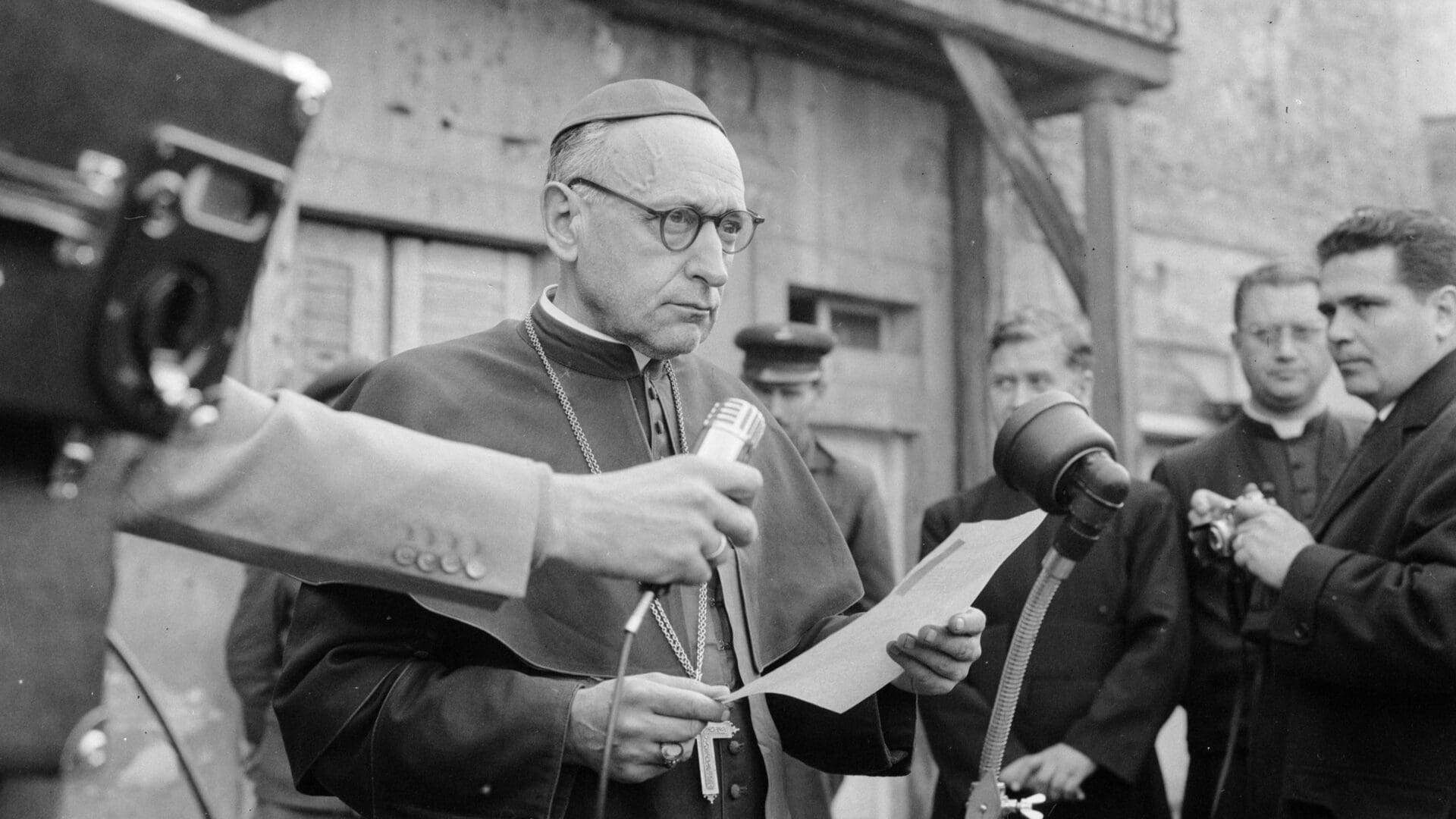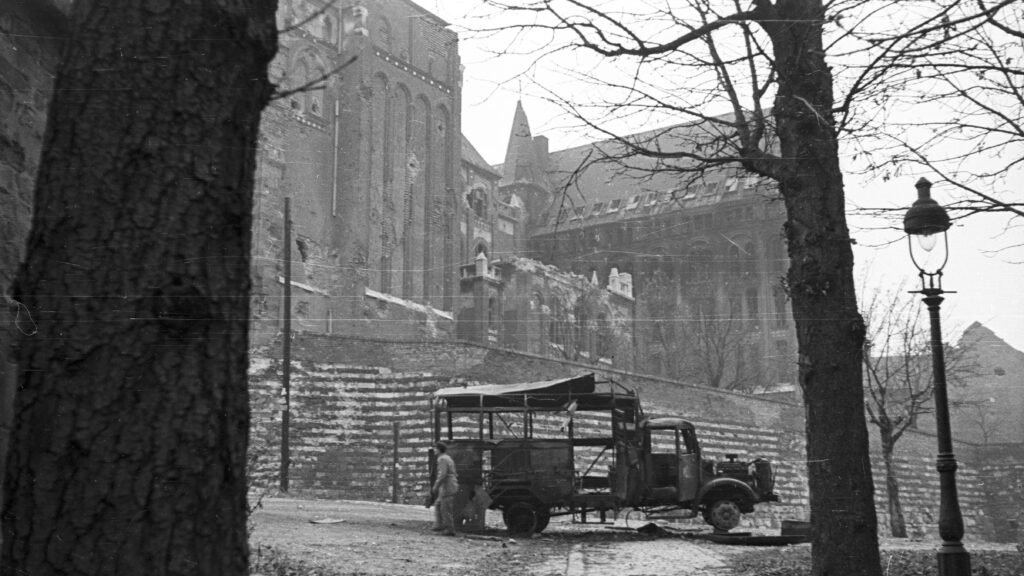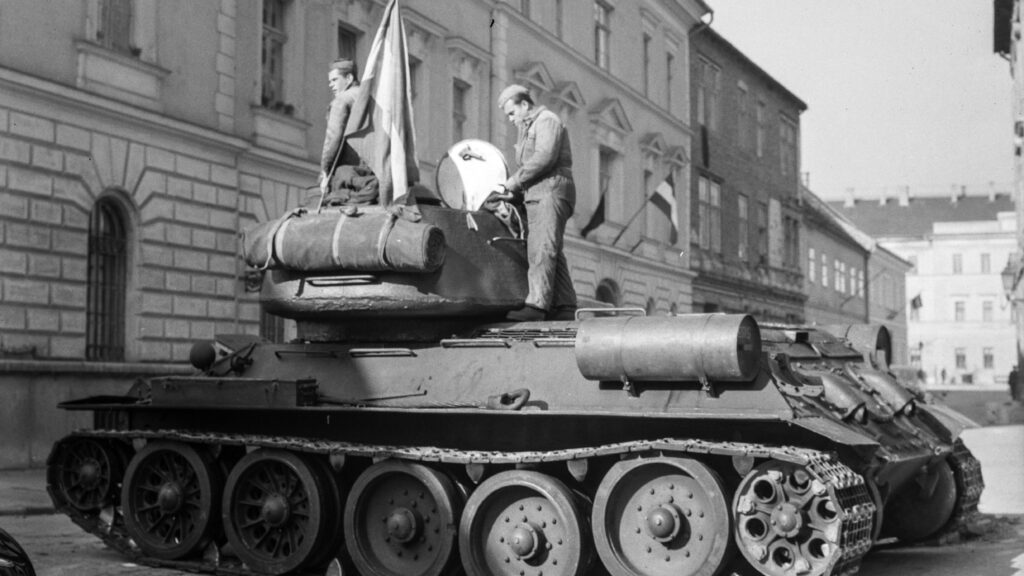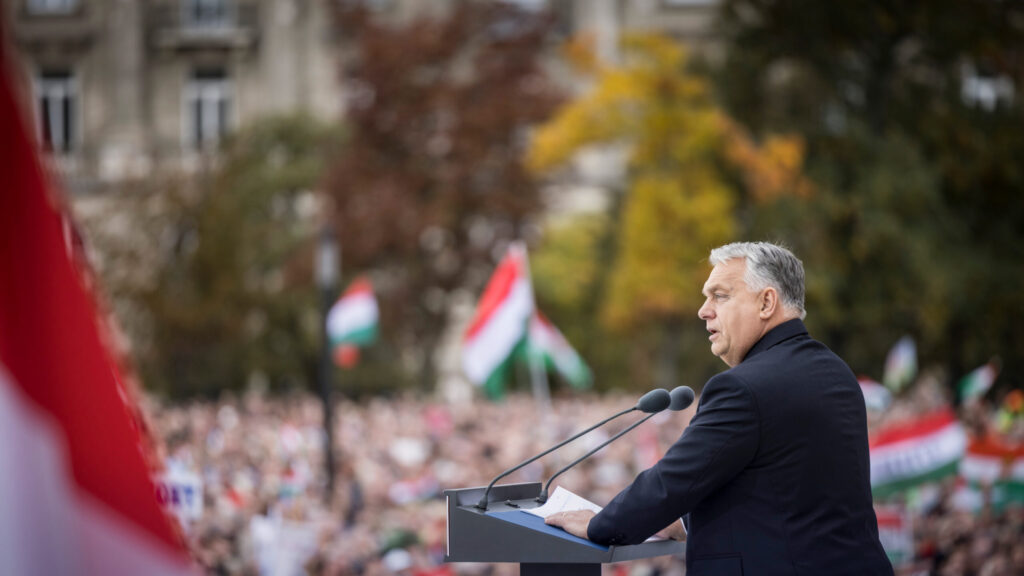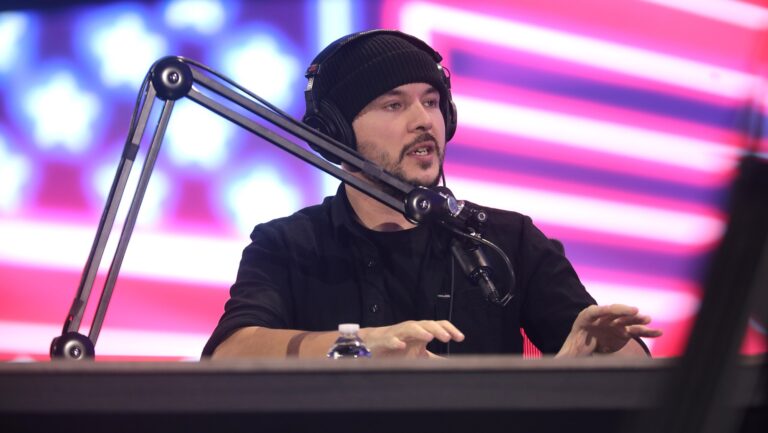Cardinal József Mindszenty, Archbishop of Esztergom was released from captivity during the victorious period of the 1956 Uprising of Hungary. The prelate immediately re-assumed responsibility as the leader of the Hungarian Catholic Church, and even tried to influence the course of the events of the revolution.
As the recent wave of ‘myth-busting’ we can witness in Hungary has not spared the person of the cardinal, either, it is important to underscore that he indeed played a very important role during the October of 1956, not only immediately before his arrest and imprisonment.
______________________________
Mindszenty was seen as a dangerous opponent by the Communist rulers of Hungary, because of his unapologetic condemnation of the dictatorship. In 1949, he was imprisoned under false charges. The Stalinist regime of Hungary resorted to this tactic toward most church dignitaries in order to force them to resign, only to replace them with more pliant ones. When they could not be forced out of their seat de jure—as it was in the case of the cardinal, for example—the state at least was able to neutralize them in practice. Mindszenty was placed under house arrest in 1955. He was then held in a church resort in Püspökladány, due to his deteriorating health. During the summer of 1956, he was once again relocated, this time to a castle in Felsőpetény.
Release from Captivity
While he was only one of the many high-profile people unjustly imprisoned by the Rákosi regime, at the beginning of the revolution his name did not surface. However, on 26 October, Catholic seminarists started to spread pamphlets calling for the freeing of Mindszenty. Soon other rebel groups joined them in their demand. The reformist government of Imre Nagy offered amnesty to Mindszenty in the last days of October. However, this pardon carried a precondition the cardinal was unable to accept: the government would have wanted him to resign from politics entirely and for good.
On 28 October, the government dissolved the dreadful State Protection Authority, the ÁVH.
As it was ÁVH policemen tasked with guarding the cardinal, they understood the government decree as them being relived of their duties. Therefore, their commander informed Mindszenty that he could leave, and handed him over to a military patrol for protection. The soldiers took him to the garrison of Rétság. This is where Mindszenty met a young officer, András Pálinkás. His real surname was Pallavicini, which he changed to Pálinkás after the Communist takeover. He hailed from an Italian noble family, which moved to Hungary in the early modern age, and has played a prominent political role ever since. According to a historical misconception, Pálinkás was a member of the patrol, and in fact, it was the soldiers who freed the cardinal. This misconstruing of the events came handy to the Communists after the crushing of the revolution: they trailed down and executed Pálinkás: they could thus blame an aristocrat for at least one event of the ‘counter-revolution’.
Pálinkás ordered the soldiers to escort Mindszenty back to Budapest, whose intention was also to return to the capital city, so the troops served as a protection detail rather than captors. Prime Minister Imre Nagy—who was a Communist, despite having yielded to the demands of the revolutionaries—wanted to prevent Mindszenty from becoming even more popular so he agreed to his leaving his house arrest, and being escorted back to Budapest. However, that backfired, as jubilant masses welcomed Mindszenty in some villages and towns along his way. Especially huge crowds gathered in Vác and Újpest.
The cardinal arrived in Budapest on 31 October. On the same day, the government officially announced his rehabilitation. This was the moment when the wider Hungarian and international public was informed of the news about his release. Journalists lined up at the residence of Mindszenty, and telegraphs poured in. Pope Pius himself also sent his greetings upon hearing the news.
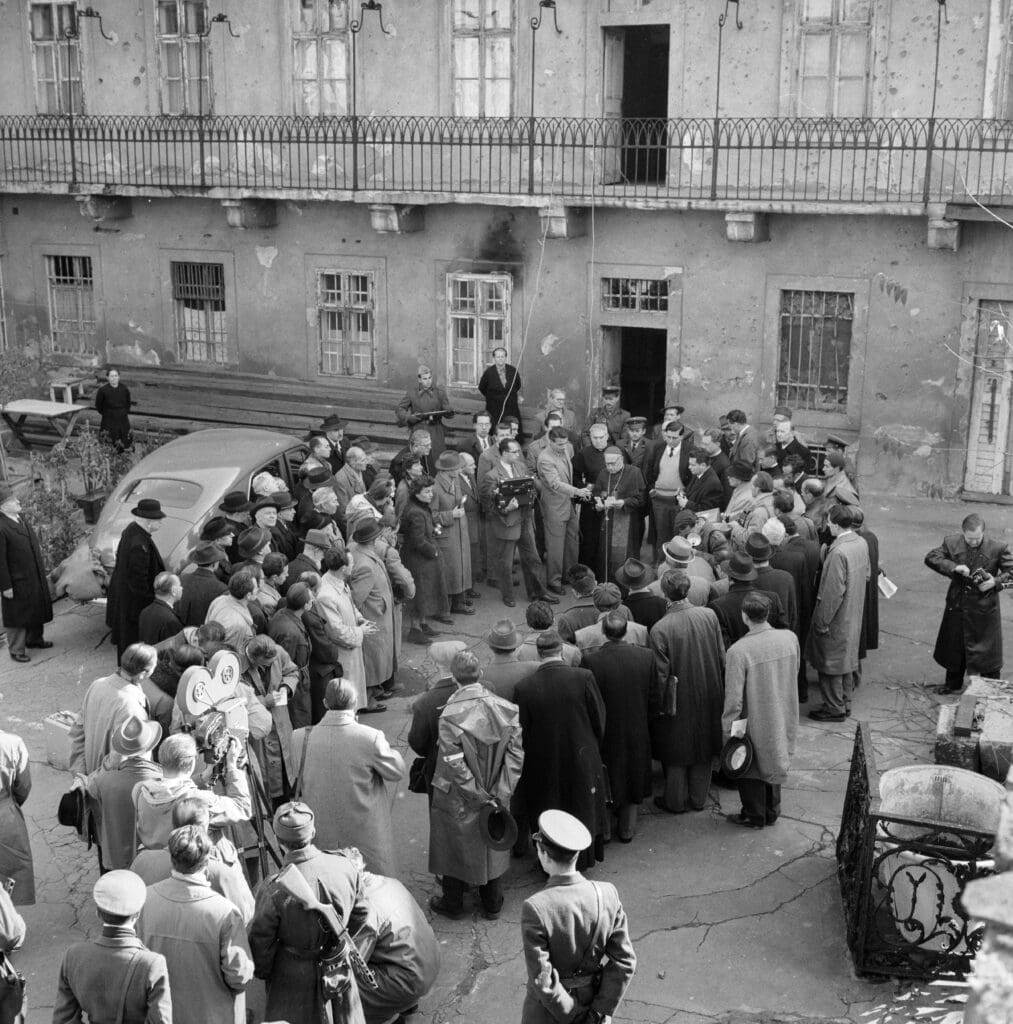
Assuming Responsibility
Mindszenty set to work immediately after his release. It must be understood that the monarchist cardinal saw himself as the most important dignitary and legal figure of the country, since according to the traditional Hungarian legal framework, in the absence of the king, the Archbishop of Esztergom, who was in charge as the Prince-Primate of the country. Consequently, and also because of his staunch anti-Communism, the cardinal did not endorse the Nagy government until the Soviet invasion. From that point on, however, he recognized it as the legal Hungarian government.
But the major concern for Mindszenty was not the legal form of the administration of the country. He rather tried to help and advise the revolutionaries. He endorsed the armed resistance against the Soviets and gave his blessing to rebel groups multiple times. Mindszenty also met and consulted with leaders of the newly formed political parties, and the government itself. However, he believed that the direction of the revolution must be set by the rebel groups, as opposed to the reform Communist government.
In his capacity as archbishop, he immediately relieved from their duties those priests who, during the early 1950s, had collaborated with the Communist authorities. He also tried to rally international support for Hungary. Mindszenty contacted foreign, especially German bishops, to ask for funding for the Actio Catholica in Hungary, an various Catholic charity groups. Aid packages started to come in, first ro Győr, near the Western border, and then to other locations as well. Thus, Mindszenty’s calls were not in vain.
As noted above, Cardinal Mindszenty declined to recognize the Nagy government even after repeated calls to do so from multiple political actors. Yet, it is wrong to accuse Mindszenty of being unable to make concessions. His programme, which culminated in a famous radio speech he held on 3 November, just one day before the fall of the revolution, was closer to the initial (false) hopes of a Western-oriented and democratic Hungary of 1945 as opposed to the Horthy era. Mindszenty spoke about the importance of work and unity, rather than of fight or revenge.
Mindszenty bíboros rádióbeszéde (eredeti hangdok. részlet)
http://monarchista.blogspot.com/ “Igen gyakori mostanában annak a hangsúlyozása, hogy a nyilatkozó a múlttal szakítva őszintén beszél. Én ezt így nem mondhatom: nem kell szakítanom múltammal. Isten irgalmából ugyanaz vagyok, mint aki voltam bebörtönzésem előtt. Ugyanazzal a testi és szellemi épséggel állok meggyőződésem mellett, mint nyolc éve, bár a fogság megviselt.
He outlined the need for friendship between Central and Eastern European nations, and designated Europe as the place where Hungary belongs. The cardinal also called for free and democratic elections, and warned that instead of ‘private revenges’, the ones who committed crimes during the Communist rule must be held accountable by independent courts. Mindszenty also spoke about the need for ‘cultural nationalism’ (as opposed to internationalism, or racism), as well as ‘regulated private property’ (as opposed to Socialism, or unregulated Capitalism). He explicitly stated that the church shall not oppose the ‘progress’ of history. He reclaimed church schools and institutions, but, contrary to Communist legends, he did not call for the returning of church estates by the government.
Exile and Legacy
However, Mindszenty did not have time to put his manifesto into practice. After the Soviet troops marched into Budapest on 4 November, he was forced to take refuge at the US Embassy. Decades later, he was allowed, or rather, asked by the Vatican, to leave the country, and the cardinal settled in Vienna in 1971. He died here in 1975.
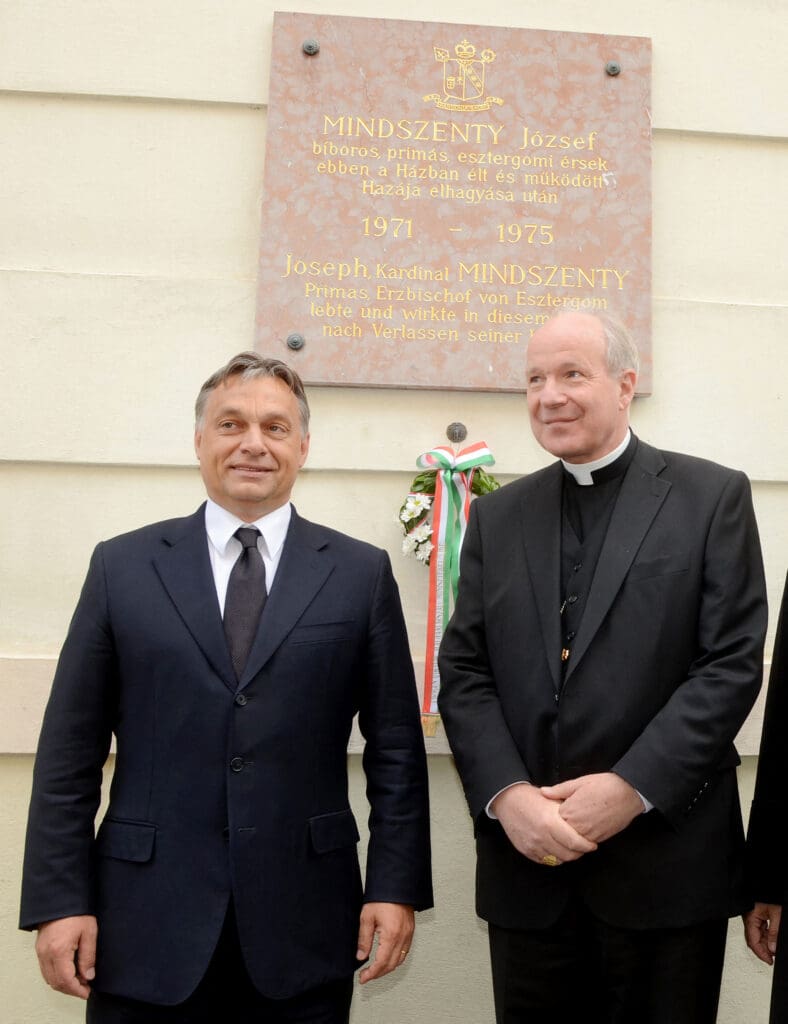
To sum up, Mindszenty played an important role in the 1956 revolution. He assumed his post as archbishop immediately after his release from captivity, appealed for international aid for Hungary, initiated the process of cleaning the church from Communist infiltration, while also being active in the political life of the country. Firmly holding onto his conservative view of himself as the most important dignitary of the country, he tried to set the direction of the course of events. Contrary to the recent myth-busting efforts, this direction was not reactionary or outdated.
The programme proposed by the cardinal was rather a Christian Democratic manifesto, envisioning a free, independent, and democratic Hungary
with a social market economy and freedom of religion. While critics label the celebration of his memory as ‘myth-building’, it was in fact long overdue to give Mindszenty the recognition he deserves, acknowledging his seminal role in opposing Communism and fighting for independent Hungary both during the 1940s and in 1956.

